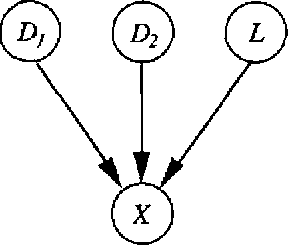Blackford Middleton
An Approximate Nonmyopic Computation for Value of Information
May 16, 2015



Abstract:Value-of-information analyses provide a straightforward means for selecting the best next observation to make, and for determining whether it is better to gather additional information or to act immediately. Determining the next best test to perform, given a state of uncertainty about the world, requires a consideration of the value of making all possible sequences of observations. In practice, decision analysts and expert-system designers have avoided the intractability of exact computation of the value of information by relying on a myopic approximation. Myopic analyses are based on the assumption that only one additional test will be performed, even when there is an opportunity to make a large number of observations. We present a nonmyopic approximation for value of information that bypasses the traditional myopic analyses by exploiting the statistical properties of large samples.
Knowledge Engineering for Large Belief Networks
Feb 27, 2013



Abstract:We present several techniques for knowledge engineering of large belief networks (BNs) based on the our experiences with a network derived from a large medical knowledge base. The noisyMAX, a generalization of the noisy-OR gate, is used to model causal in dependence in a BN with multi-valued variables. We describe the use of leak probabilities to enforce the closed-world assumption in our model. We present Netview, a visualization tool based on causal independence and the use of leak probabilities. The Netview software allows knowledge engineers to dynamically view sub-networks for knowledge engineering, and it provides version control for editing a BN. Netview generates sub-networks in which leak probabilities are dynamically updated to reflect the missing portions of the network.
 Add to Chrome
Add to Chrome Add to Firefox
Add to Firefox Add to Edge
Add to Edge